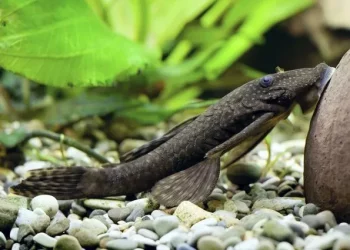Angelfish, with their vibrant colors and graceful appearance, are a popular choice among aquarium enthusiasts. These freshwater fish, known for their distinctive triangular shape and flowing fins, are prized for their beauty and charm. However, keeping angelfish safe in a community aquarium requires an understanding of potential threats from other aquatic creatures. In this article, we will explore the various animals that may prey on or harm angelfish in their natural habitat or in a shared aquarium environment.
Natural Predators in the Wild
In their native habitat of the Amazon River basin and other South American waterways, angelfish face several natural predators. These predators are often other fish species or aquatic creatures that see angelfish as a source of food:
Larger Fish: Predatory fish species like catfish, cichlids, and larger characins may target smaller angelfish as prey.
Birds: Some species of birds, such as herons and kingfishers, feed on angelfish when they venture near the water’s surface.
Aquatic Insects: Insects that spend part of their life cycle in the water, such as dragonfly larvae and water beetles, may consume young angelfish or their eggs.
Aggressive Tankmates in Aquariums
When keeping angelfish in a community aquarium, it’s essential to be mindful of potential tankmates that may exhibit aggressive or predatory behavior. While angelfish are generally peaceful, they can be vulnerable to the following types of aquarium residents:
Large Cichlids: Some larger cichlid species can view angelfish as competitors or prey. Aggressive cichlids may harass or harm angelfish.
Oscars: Oscars are large and aggressive cichlids known for their predatory behavior. They can pose a significant threat to angelfish in the same tank.
Plecos: While not typically a direct threat to angelfish, large plecos (plecostomus catfish) may harm angelfish eggs or disrupt their breeding behavior.
Red-Tailed Sharks: These territorial fish may become aggressive toward angelfish, especially if the tank lacks sufficient hiding places.
Ensuring Compatibility in Community Tanks
To create a harmonious community aquarium that includes angelfish, it’s crucial to carefully select compatible tankmates. Consider the following guidelines to minimize conflicts and predatory behavior:
Fish Size: Choose tankmates that are similar in size to your angelfish to reduce the risk of predation.
Peaceful Species: Opt for peaceful fish species that are less likely to engage in aggressive behavior.
Non-Predatory Fish: Select fish species that have a diet primarily consisting of flake or pellet food rather than live prey.
Adequate Space: Ensure that your aquarium provides sufficient space and hiding spots for angelfish and other residents to establish territories and avoid conflicts.
Conclusion
Angelfish are exquisite and captivating freshwater fish that can thrive in aquariums when provided with suitable tankmates and a well-maintained environment. Understanding the potential predators and threats to angelfish, both in the wild and in aquariums, is essential for their safety and well-being. By carefully selecting compatible tankmates, monitoring behavior, and creating a peaceful and spacious aquarium setting, you can enjoy the beauty of angelfish alongside other aquatic companions in a harmonious and thriving community tank.
Recommended reading:


























